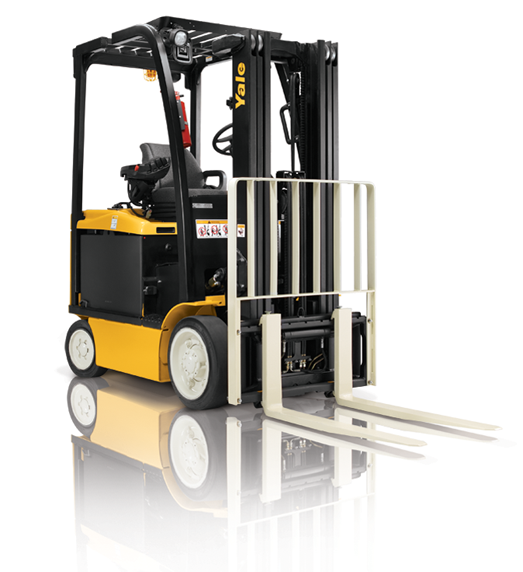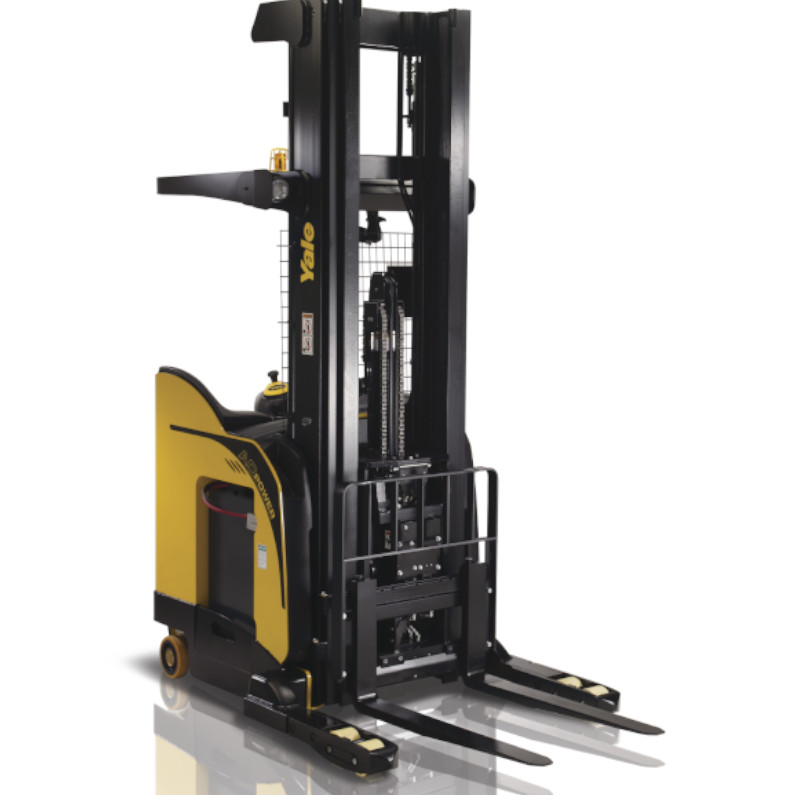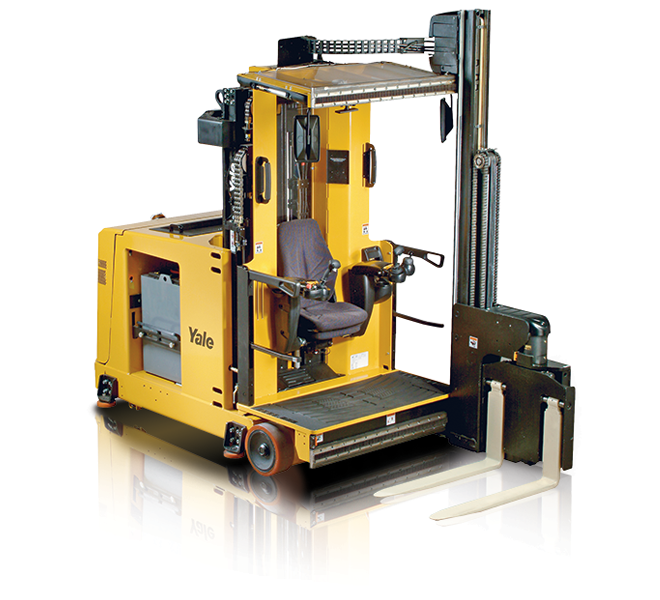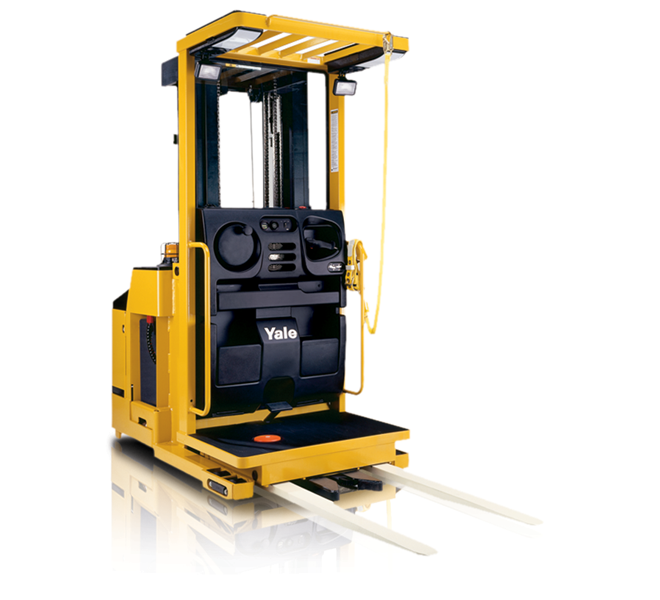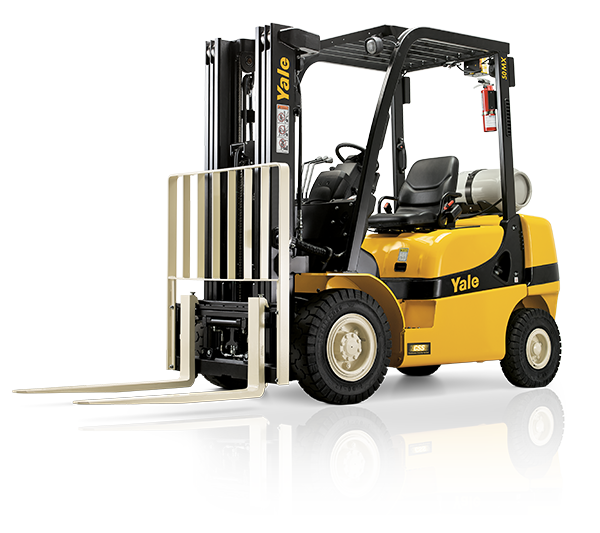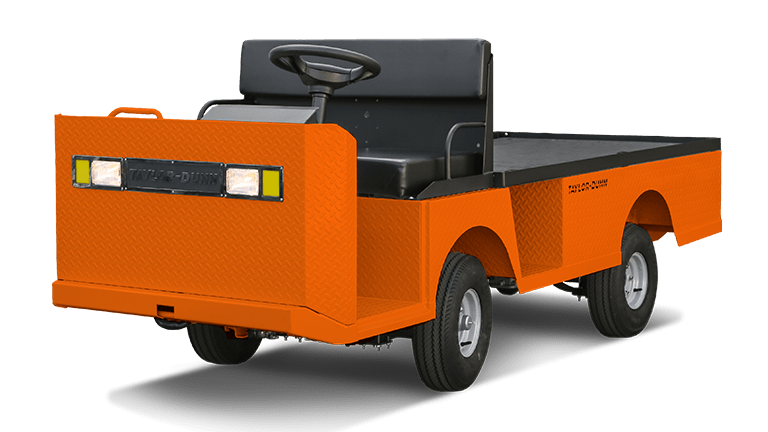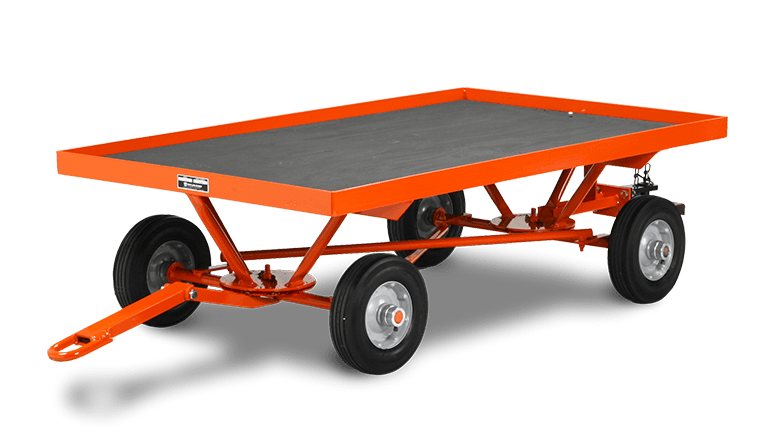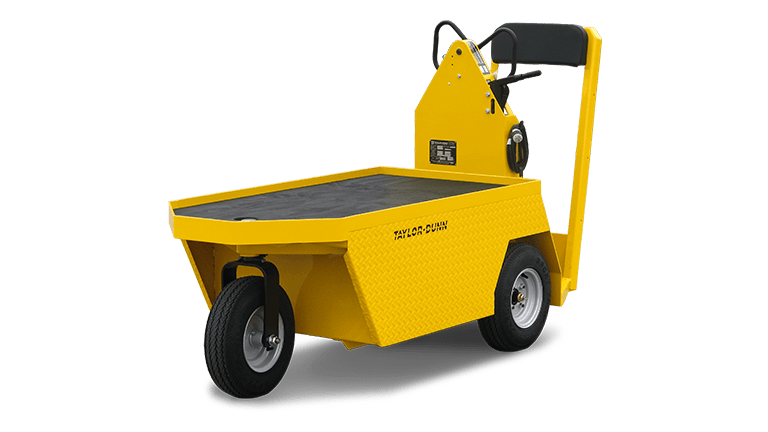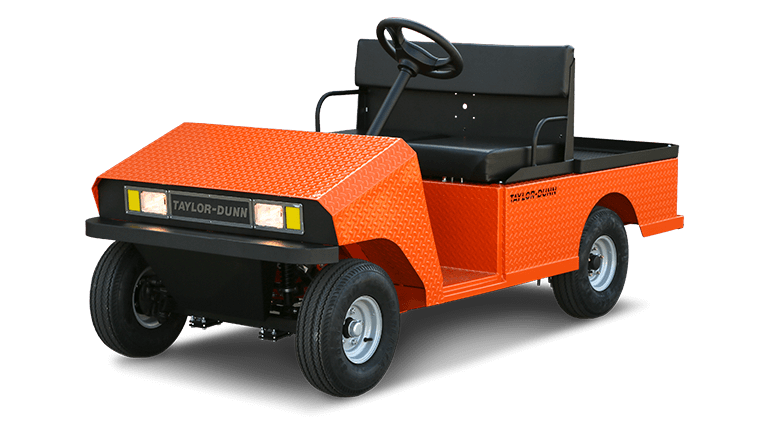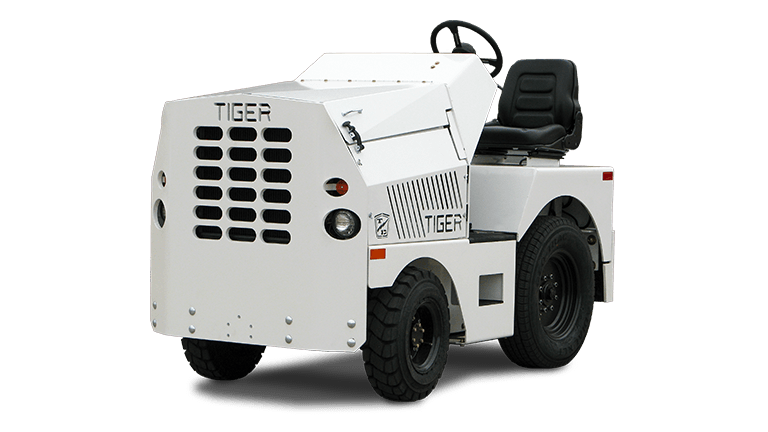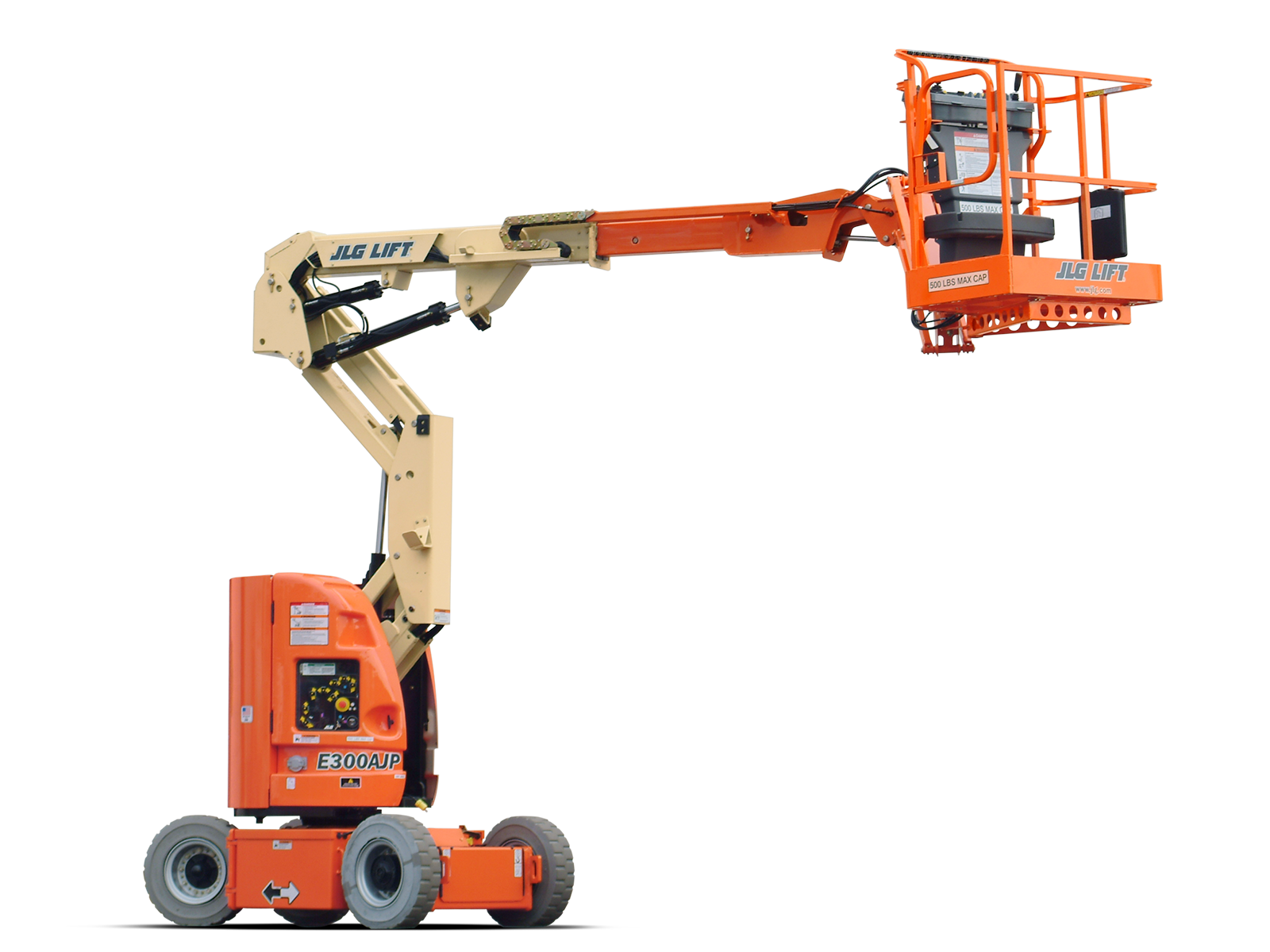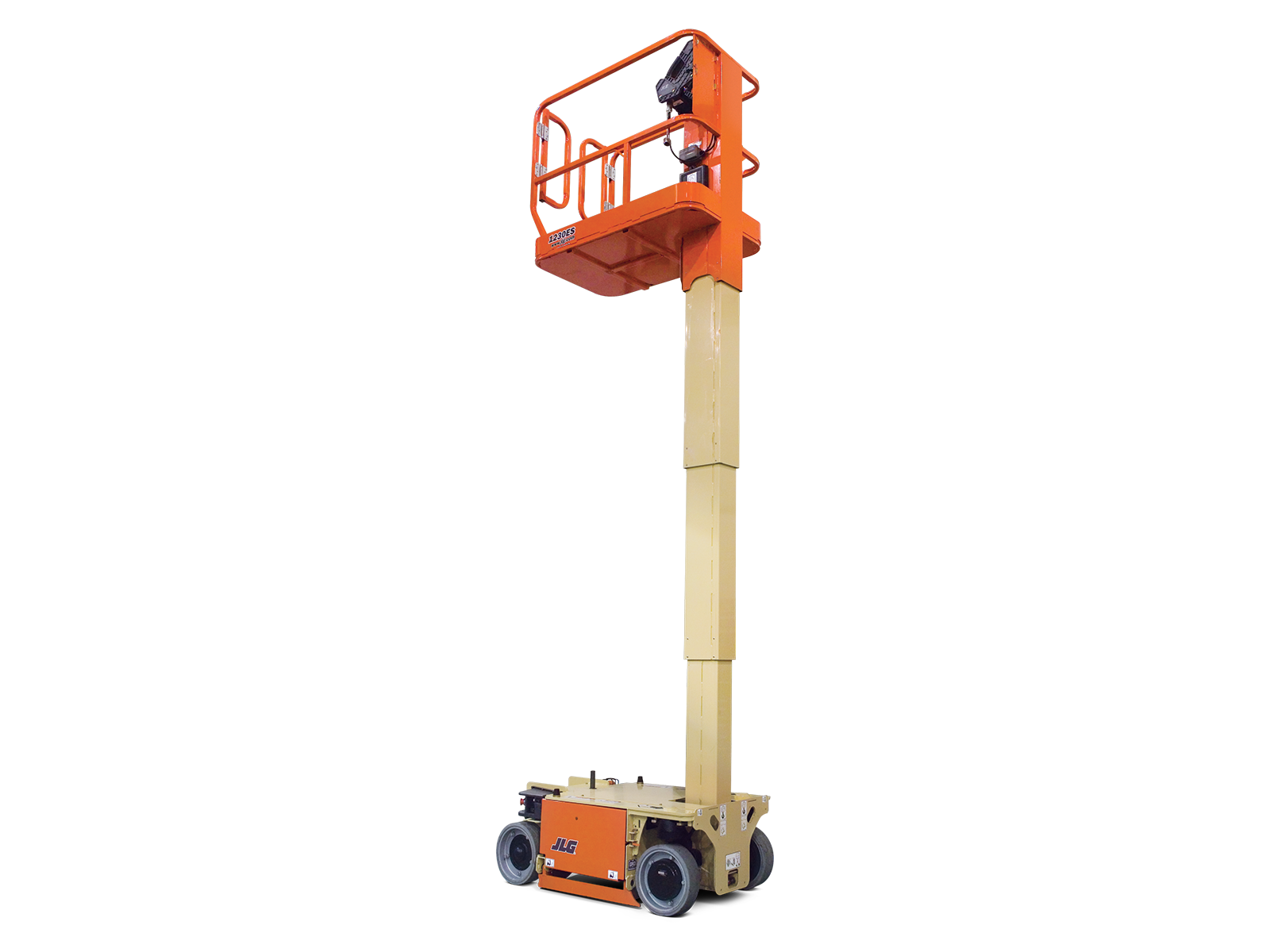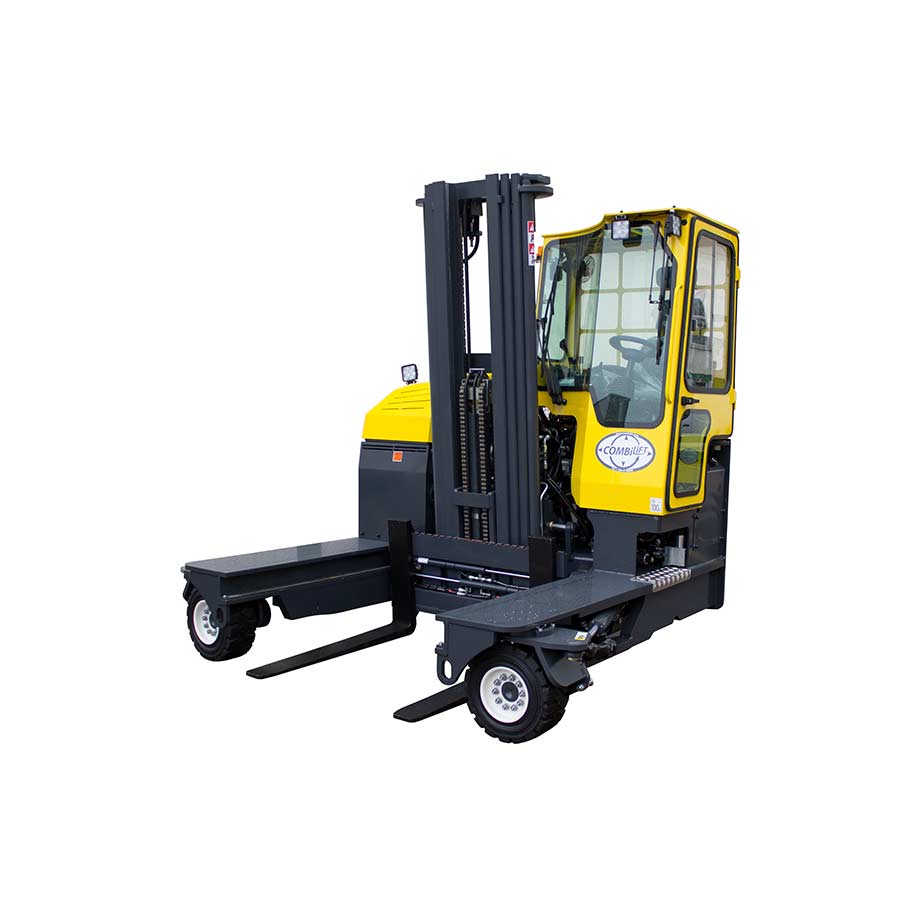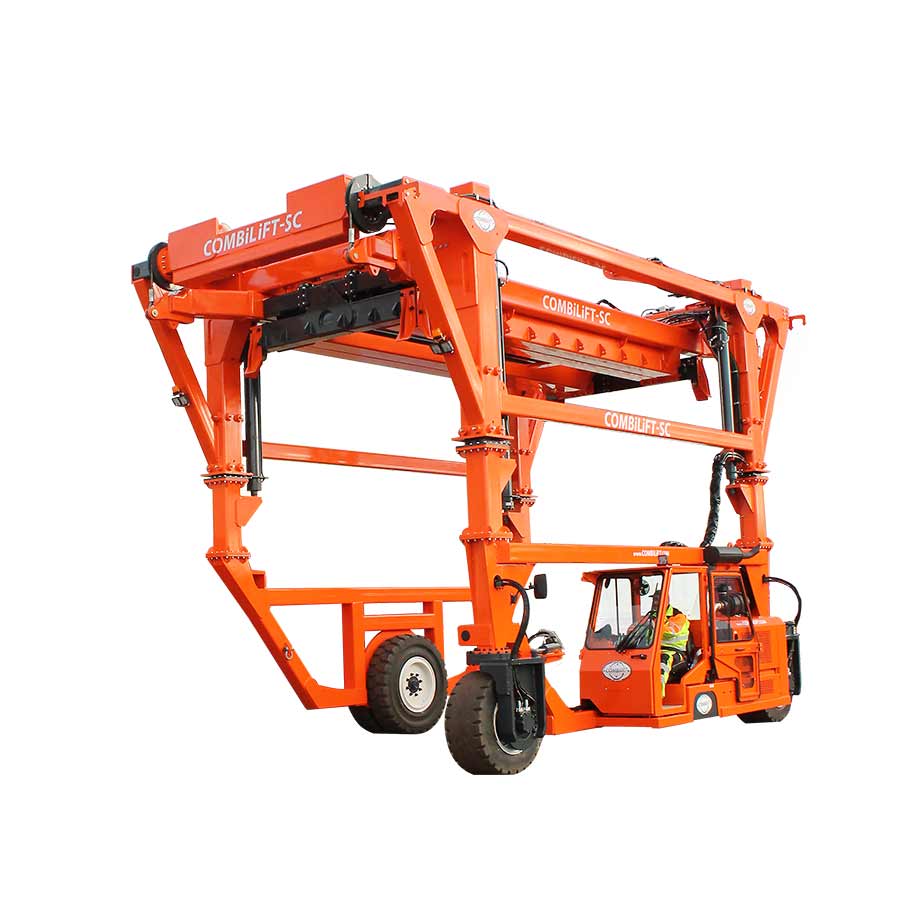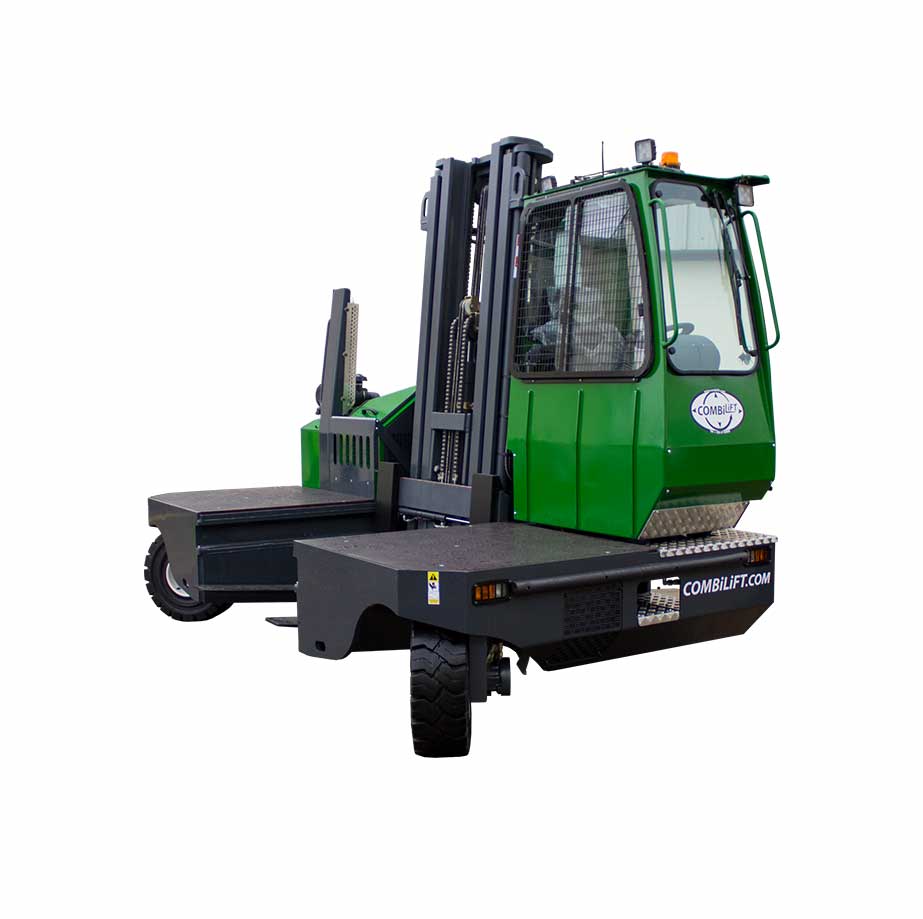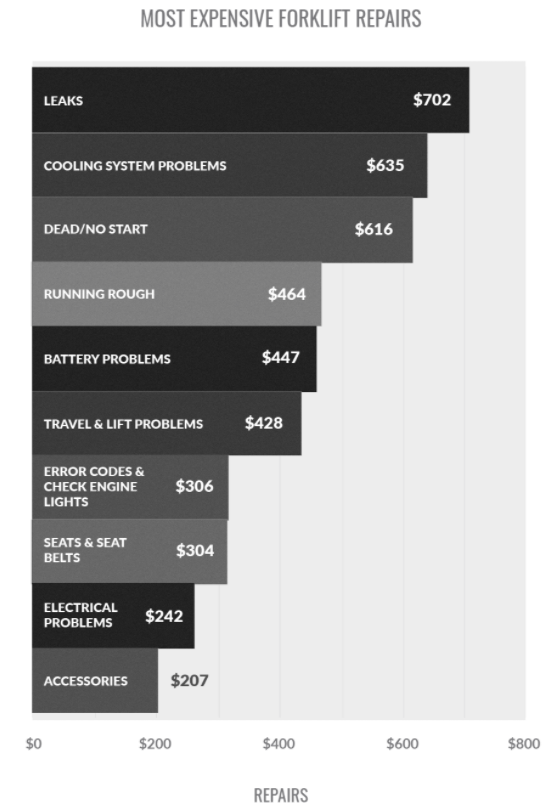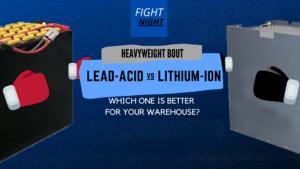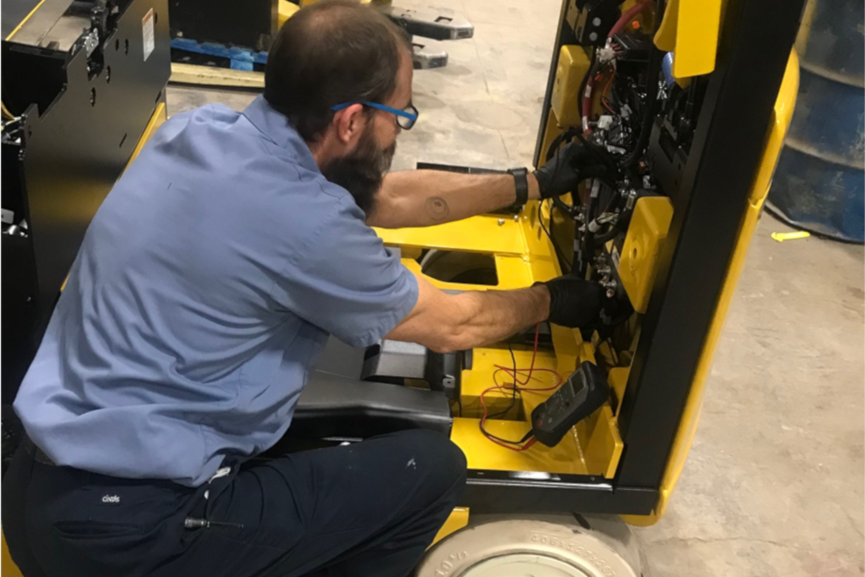
Why Forklift Preventive Maintenance is so Crucial to your Operation

Sawyer McGuire
Marketing Coordinator at Hy-Tek Material Handling
- Posted: June 10, 2021
- Read Time: 5 mins
When you buy a forklift you are told all about forklift preventive maintenance, but oftentimes it is just an extra sheet to sign on a purchase agreement.
In this breakdown we will take a look at the actions performed in preventative maintenance and expenses you can avoid by having these checkups performed.
What is Forklift Preventive Maintenance
Forklift preventative maintenance is a routine maintenance check that looks at fluid levels, attachments, safety items, electrical components, and lubrication levels for proper function.
These checks are recommended at every 500 hour interval or every 3-month period (whichever comes first) for most of the newer forklifts and every 250 hours for older models.
The main purpose of these maintenance checks are to catch any potential problems before they become more expensive, or even worse… cause an accident.
The Video Below Does a Good Job Demonstrating a PM
Potential Costs that Preventantive Maintenance Help You Avoid
Research from over 6,200 forklift repair calls shows what the most common issues are.
In the study, the Conger team found the following as the 3 most common forklift issues that required repairs to be made:
- Leaks (20.4%) from blown hoses, damaged tubing, and cracked cylinders
- Travel & Lift Issues (15.2%) due to broken or corroded wiring and malfunctioning switches
- Safety Issues (13.9%) such as the horn, alarm, lights, etc.
These repairs were then tallied on the total cost and an average was taken.
Leaks not only checked in as the as the most common problem but was also the most expensive general repair.
Areas Checked During Preventative Maintenance
The specifics change from model to model on forklift preventive maintenance.
However, the areas below are the common checks that technicians make at every 500 hour service interval for electric forklifts and every 250 hours for LP Gas/Diesel forklifts.
Note: When your forklift reaches 2000 hour and 4000 hour intervals you should have a more detailed maintenance check, with some replacements to components such as your hydraulic oil filter, hydraulic oil and bearings, among others.
Forks
The forks are checked for cracks and wear as well as alignment.
Typically you want to ensure the heel wear is less than 10% of the original thickness.


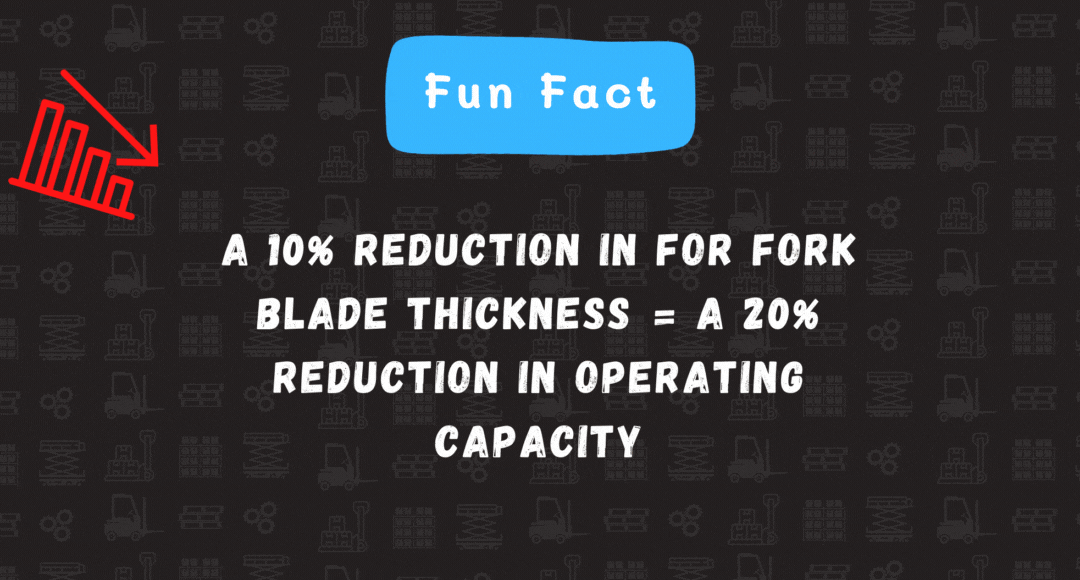
Header Hose Check
The hoses within the mast are checked for kinking, flattened areas or charred areas, and proper hose tension.

Mast Lubrication
The mast channels are inspected for any loose particles.
The sliding surfaces are then lubricated.
The technician will need to tilt the mast back for the proper angle to reach the mast mounting/pivot pins.
If you have a side shifter or another attachment then sliding areas will need lubricated.
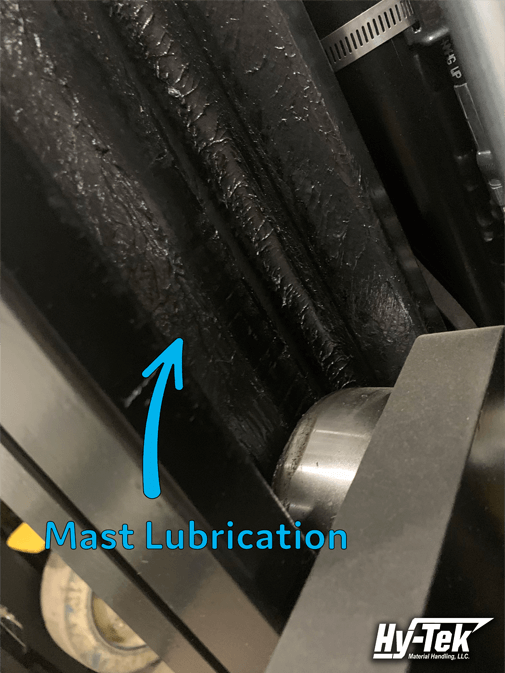
Parking Brake Adjustment
A specific amount of lbf (pound-force) is applied to the brake pedal with brake cables assembled.
The parking brake tension is set and the jam-nut is put in place to secure any adjustments.
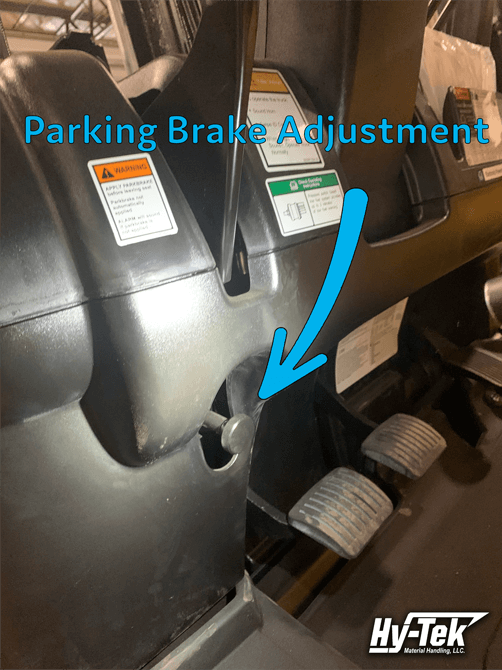
Brake Fluid Check
The brake fluid level is checked in the master cylinder, and if needed fluid is added.
The technician will also test for any leaks as well as proper operation of the brake pedal.
One item to note is the brake fluid is located on the dash for most gas forklifts. Whereas, the brake fluid is located under the floor plate on electric forklifts.
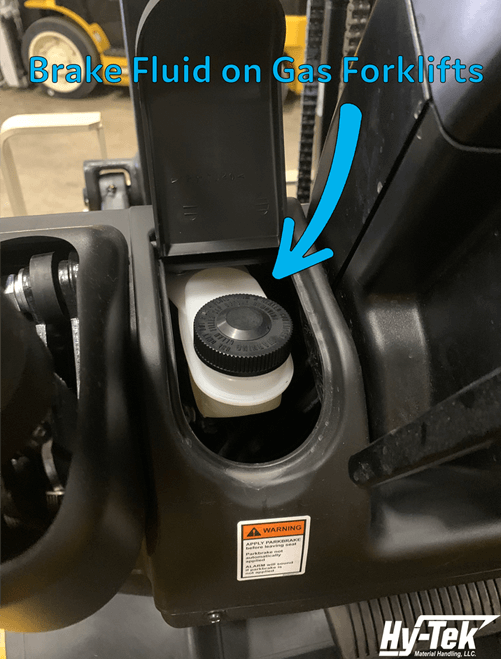
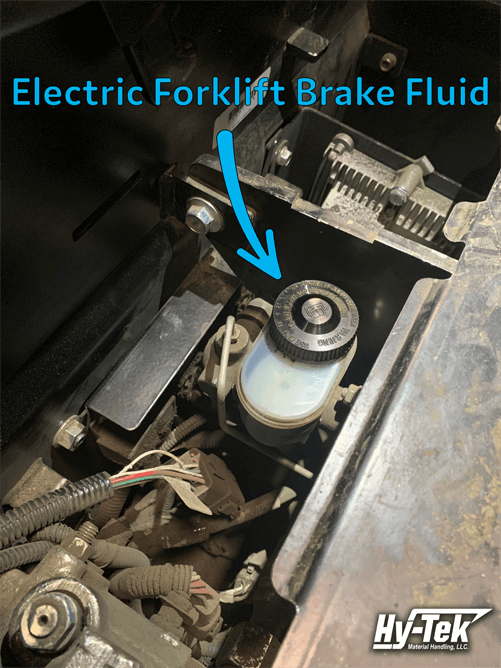
Operator Presence System Check
The OPS is checked for proper function to ensure the forklift’s hydraulic and electrical functions will disable if the operator is to get off of the seat.
Differential and Speed Reducer
The oil level is measured and topped off.
The technician will test to ensure oil flows through the bearings speed reducer correctly.
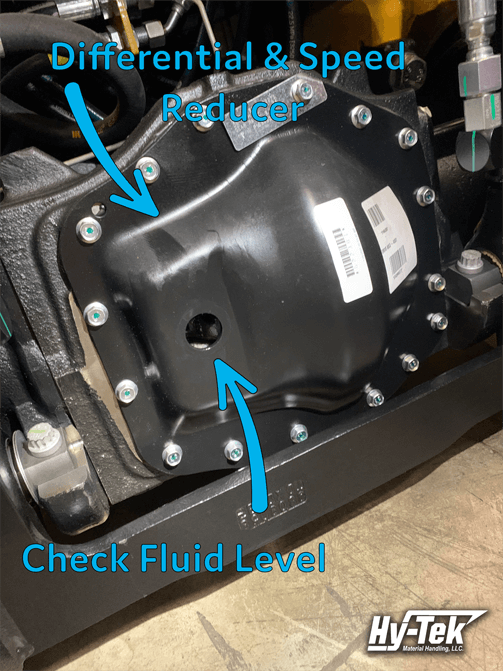
Tilt Cyclinder Rod End Pins
The tilt cylinder rod end pins are lubricated with multipurpose grease.
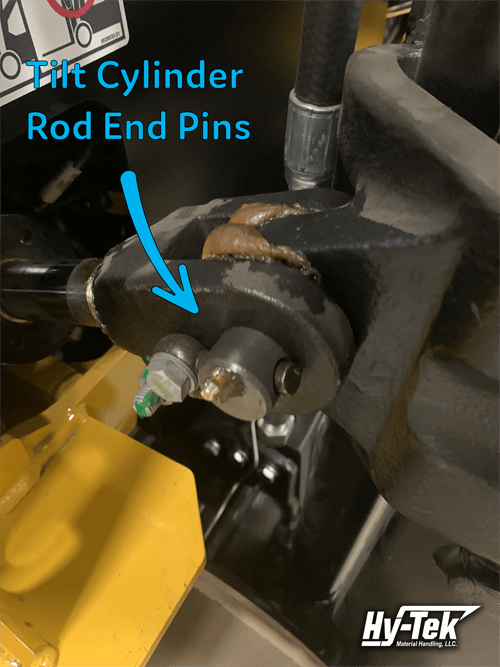
Lift Chains
The lift chains are checked for wear and lubricated.
If a section of chain is 3% longer than a similar section of new chain then it is worn and must be replaced.
The lift chain is also inspected for edge wear.
The technician needs to make sure the edge wear of the chain is not greater than 5%.
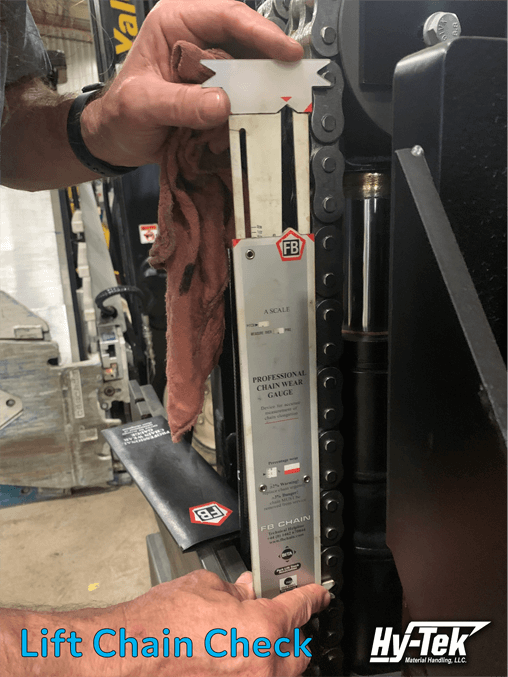
Fork Pins & Guides
*If the lift truck is not equipped with a fork positioner attachment the fork pins are lubricated.
In dirty, dusty or difficult applications the lubrication of the fork pins and guides may be required more frequently than every 500 hours or 3-months.
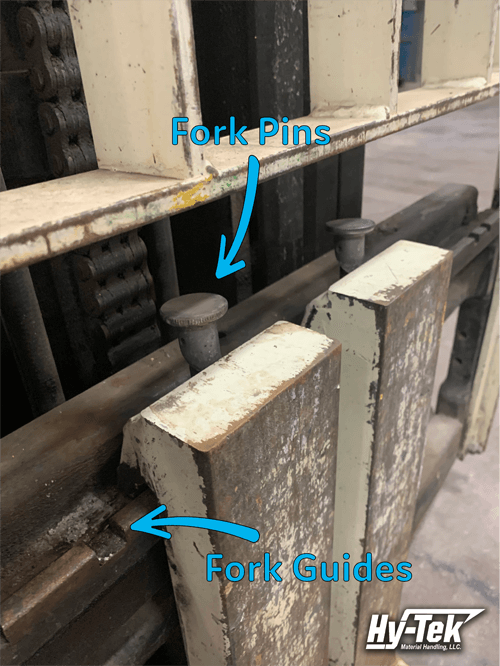
Integral Sideshift Carriage Upper & Lower Bearings
Forks, mounting hooks and the backrest are taken off.
The bearing areas are cleaned and the side-shift bearings are inspected for wear beyond a set mm thickness.
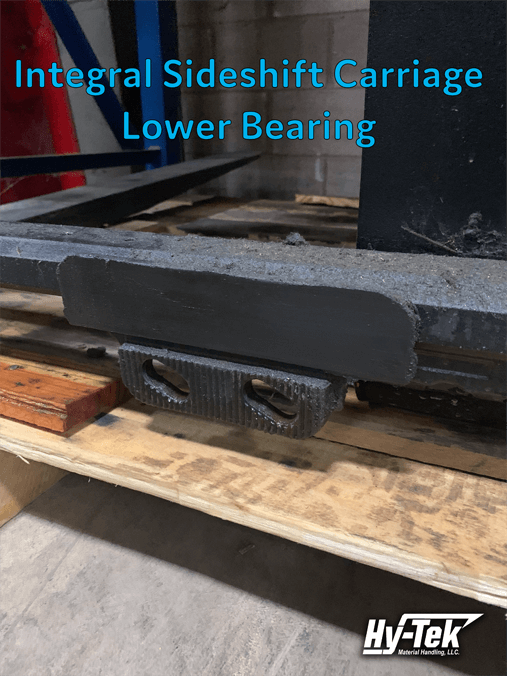

Integral Sideshift Carriage Lower Mounting Hooks
The lower mounting hooks are inspected for wear.
If the hooks are worn beyond the wear limit the technician will recommend a replacement option.
Steering King Pins
The steering king pins are lubricated with multipurpose grease.
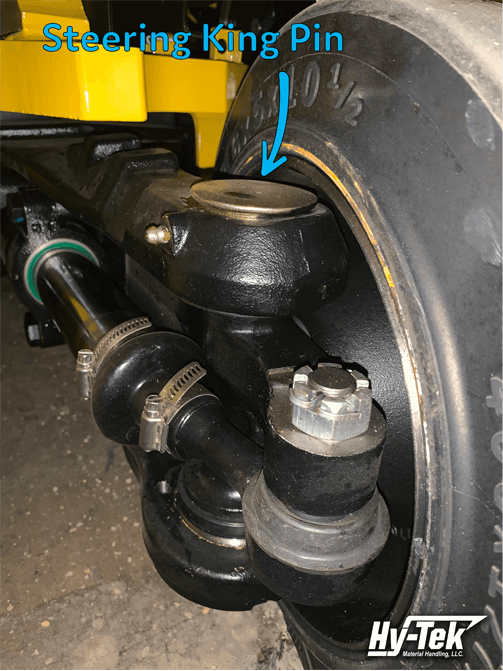
Hydraulic Tank Breather
The floor plate is lifted up and an air compressor is used to remove any dirt or debris around the hydraulic tank breather.
The hydraulic tank breather is removed and washed in a solvent and dried.
The technician will check for any dents or damage to the tank.

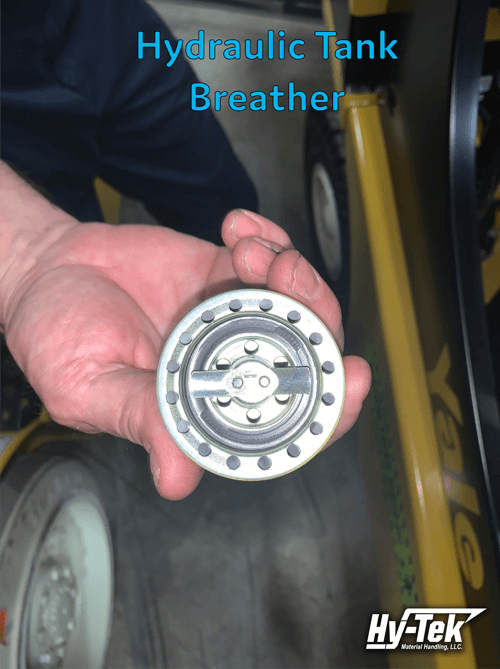
Hydraulic Control Levers
The technician lubricates the hydraulic control levers as required by OEM specifications.
The picture below is of manual hydraulic levers, sometimes these come in a different style depending on the type of forklift.
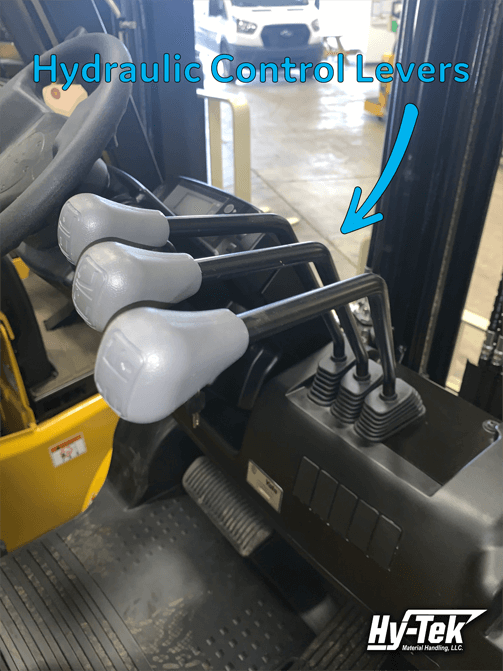
Contactor
The battery is disconnected and the capacitors are discharged.
The capscrews are removed and the counterweight cover is removed also.
From here, the contactor will be inspected based on OEM specifications.
Note: contactors are only present on electric forklifts.
Conclusion
At the end of the day, the performance of your forklift is important to your operation.
If your forklift acts up and starts having issues it not only means less uptime but it also means you have to shell out some cash to fix whatever could be the problem.
Like we always say, it is better to be driving you car and have clear vision of upcoming potholes so that you can avoid them.
Forklift preventive maintenance is similar. If you regularly check all the areas of your lift you can find any problems before they become damaging to your entire operation.
Want Further Reading? Discover All you Need to Know About the 5 Forklift Types Here
FAQ
Most electric forklifts should be serviced every 500 hours or 3-months, whichever one comes first. While your standard LP Gas or Diesel forklift should be serviced every 250 hours.
A forklift that has over 10,000 hours is considered high on its hours. However, if maintained well and serviced regularly some brands of forklifts can run up to 25,000 hours. Typically, the cost of maintenance and parts will begin to increase greatly when a forklift surpasses 10,000 hours.
OHSA requires that forklifts are to be inspected by their operator at the beginning of each shift or every 8 hours.

